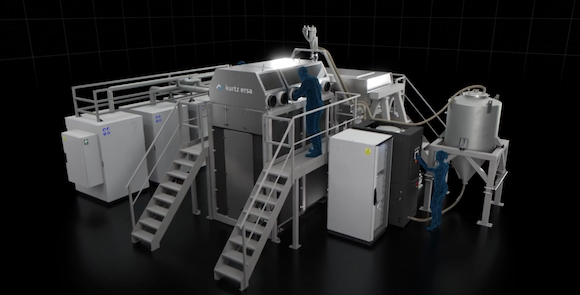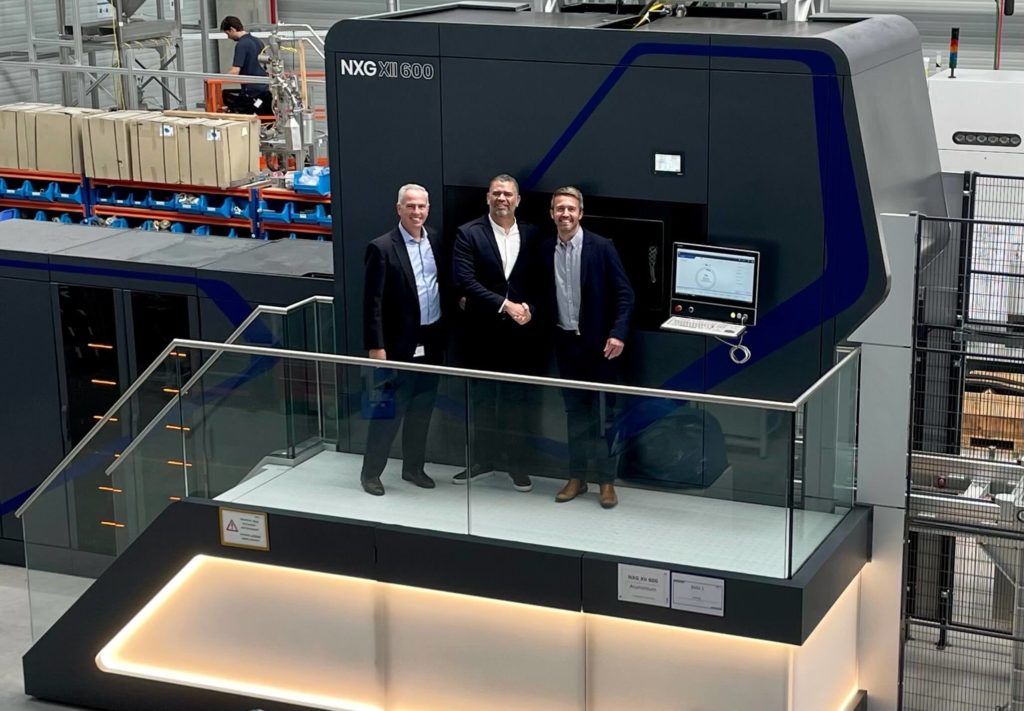In our article on predictions for the serial production of metal parts Autodesk’s Director of Additive Manufacturing, Alexander Oster, suggested that, “the metal AM space is currently splitting in high-end machines that grow in size and capital costs (mainly driven by aerospace applications), and in mass market machines which—at lower capex and associated risks—will drive lower-end applications that do need low part unit costs at a specific quality.”
I’ve had numerous discussions about this statement over the past few days and I think it’s something that we need to consider in greater depth. What surprised me is just how many people are utterly convinced that Alex’s statement is true and already happening, while others believe that we are far from commoditizing metal 3D printing. I’m always extremely interested when commonly held expert opinions reveal a dichotomy in an industry. The future is often found at the frontier of the profound, the unexpected, and the widely believed. Time and time again, I’ve identified small data points that divide those in the know. Subsequently, interesting things almost always occur.
Laser Wars
In this sense, what Alex is predicting is that the market for metal laser and electron beam powder bed fusion (PBF) will fork. The first element of his prediction is almost universally held. We can all see the laser wars unfold in real time. SLM sold five 12-laser machines at the beginning of last year, more since, and then followed up with an order for an even larger system. So, not only are metal printers getting significantly bigger and much more expensive, but they are selling.
The fact that New Space, and rocket propulsion in particular, is driving demand for AMCM, Additive Industries and SLM systems is also not a secret. Large combustion chambers and other parts, often in copper, are in high demand (over 1.4 million kilograms of copper powder for additive are expected to ship by 2029). In order to meet tight schedules, fueled by millions in investor cash, rocket firms are building weight-saving, higher performing propulsion components that are faster to iterate and get to the launch pad.
For a deep insider look at the potential here, please do listen to our 3DPOD episodes with Launcher’s Tim Berry, NASA´s Paul Gradl and JPL’s Douglas Hoffmann. From speaking with them, it becomes abundantly clear that additive is a key technology for winning in space. And to win in space and rocket propulsion—including nuclear warheads, missiles, and satellites—we need much bigger build volumes. Pretty much everyone at this point will, therefore, agree with one part of Alex’s prediction: aerospace is driving the need for and revenue in large systems. These systems are now creeping from $750,000 to $3 and $5 million raising investment considerably and, according to the DED and Large-Format Additive Manufacturing Markets: 2021-2030 report from SmarTech Analysis, this sector is expected to reach $739 million in revenues by 2026. However, given the supercharged economics of defense and new space this should not be an impediment to their growth.
Cheaper Metal 3D Printers
At the same time, the advent of entry-level, value-engineered PBF systems from Kurtz Ersa, One Click Metal, and others is not a secret. These machines make 3D printing more accessible by using cartridges, for example, eliminating a lot of vacuum cleaning and other requirements to the space for your printer. By reducing a lot of the up-front cost, they make metal 3D printing a lot more attainable. There is a broader movement toward push-button metal 3D printers that are significantly less expensive and much easier to operate, a trend we identified already in mid-2021.
At the same time, the incessant march of Chinese suppliers like Farsoon, EPlus3D, H3D and BLT has not gone unnoticed either. They reduce the costs of 3D printers considerably as well. Interest in binder jet also makes people believe in lower cost parts. This all is pretty much gospel at this point.
 Kurtz Ersa’s Flying Ray is meant to have a build rate of up to 500 cm³/h
Kurtz Ersa’s Flying Ray is meant to have a build rate of up to 500 cm³/hAdditionally, there is ScanLab’s technology. If the firm makes quad-3D printing optics commonplace, then the developments of the Kurtz Ersas of the world and the Chinese vendors will be accelerated.
Exceptionalism
 Interspinal cage
Interspinal cageWhen you discuss 3D printing and cheaper metal systems, you get a lot of claims of exceptionalism. Many seem to believe that Chinese systems are not feasible for a number of applications. Tensions between the U.S. and China have led to apprehension about developing long-term relationships with Chinese firms, lest there be issues with embargoes or prohibitions of doing business with them. At the same time, there is somehow the belief that, even though the Chinese businesses are advancing, they will somehow never quite close the gap with European metal printing vendors.
However, again and again in machine making and many other industries, we’ve seen Chinese firms in fact close the gap and make comparative products over time. It would be naive to somehow think that AM will be the exception here. China also wishes to advance its space industry, fighter jets, missiles, satellites and warheads. The country has a lot riding on 3D printing. Indeed, as we can see in our 2021 series profiling the logic, needs, and progress of China’s high-tech industry, a lot of the nation’s future is dependent on AM. The country needs to win in 3D printing. Given its prowess and the advancements that the nation can make off of 3D printing, it will advance.
Commoditization
Behind closed doors, most do admit that the Chinese will gain, but few think that this will happen in space, defense, and high-end industrial sectors. Geopolitics will probably blunt the country’s advance in these areas and may preclude it wider still. But, the erosion of market share is not exactly what Alex is getting at in his quote. He’s talking about a bifurcation of the market between the high-end ITAR and new space adjacent applications alongside more commoditized 3D printing.
What he literally means is that, in a number of years, you can just buy a machine with a 250 x 250 x 325 mm build volume. The vendor could be U.S., Chinese, Turkish (like Ermaksan) or from any country really. Most of the kinks in optics will be worked out, software will be better, and, in the 250mm market, most machines will be more or less standard. Hatching will be better. Designs and support strategies will be wider spread. We will have cheaper, good powder and software will assist much more with nesting and orientation. Cloud-based tools will learn from users to improve placement, supports, and workflows. We will all be more experienced and everything will be more routine.
In that kind of a universe, 3D printing will be commoditized for industrial parts of a specific geometry at a specific quality level. Choosing a 3D printer will no longer be hard, since a lot of machines will work decently. This is almost classic Clayton Christensen disruptive innovation stuff. Good-enough companies displacing early companies has been a truism for many sectors. Somehow, some in the additive industry think that we’re on some magic island and this will never happen to us. Chip-making sure. Manufacturing, molds, too. But, no, not our snowflake of an industry of 3D printing? Yes, 3D printing is hard, but I do believe that commoditization is coming.
If you’re an industrial firm, you’ll just get a 250 x 250 x 325 mm build volume machine for $100k for a quotidian part. Need a higher value, more accurate component with better tolerances? Then buy a $150K machine from these half-dozen vendors. Need something for energy? Then, maybe this industry-specific machine for $300k would work. Or you can select from four alternatives that work for that application. This is the logical future of PBF and metal printing in general. Maybe you could disagree with me but if you look at what all of the big metal printing firms are doing. There’s no disagreeing with them. They believe this too.
Subscribe to Our Email Newsletter
Stay up-to-date on all the latest news from the 3D printing industry and receive information and offers from third party vendors.
You May Also Like
HILOS Launches Studio OS for AI-Driven 3D Printed Shoe Design
At Milan Design Week, footwear 3D printing startup HILOS has unveiled its latest development, Studio OS. Introduced at the historical Villa Bagatti Valsecchi, the platform is meant to redefine how...
3D Printing Webinar and Event Roundup: April 28, 2024
In this week’s 3D Printing Webinar and Event Roundup, the Ceramics Expo is taking place in Michigan, Stratasys continues its advanced training courses, and SPE is holding a Polymer Characterization...
Initial Speakers and Sponsors Announced for Additive Manufacturing Strategies 2025
Nearly a year away from the event, the Additive Manufacturing Strategies (AMS) 2025 conference is already beginning to take shape. Building upon the success of 2024’s summit, AMS has established...
HP & INDO-MIM Collaborate to Boost Metal 3D Printing in India
HP Inc. and INDO-MIM, a US- and India-based supplier of metal injection molding (MIM) powders and contract manufacturer, have announced that the two companies will collaborate to accelerate additive manufacturing...
































